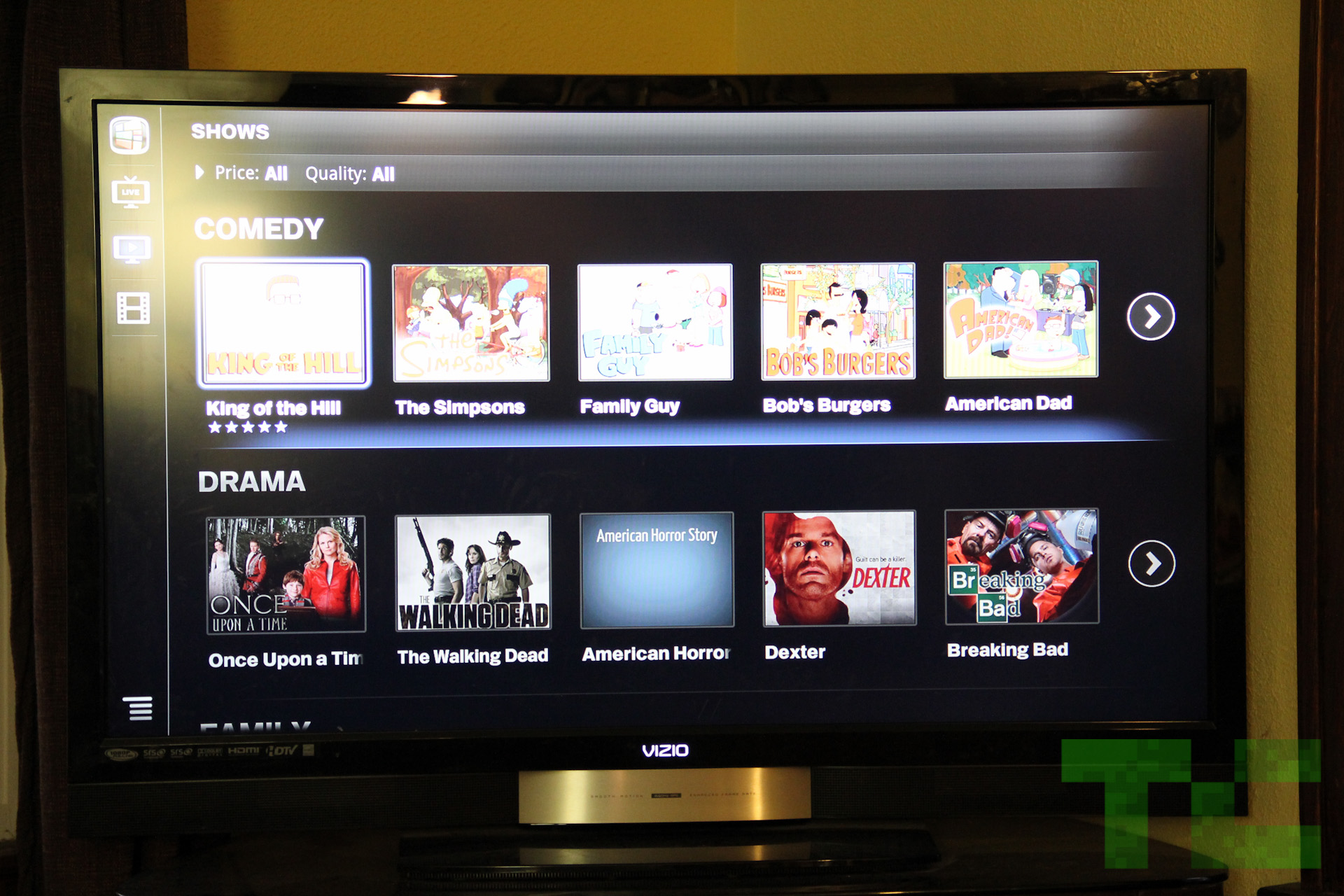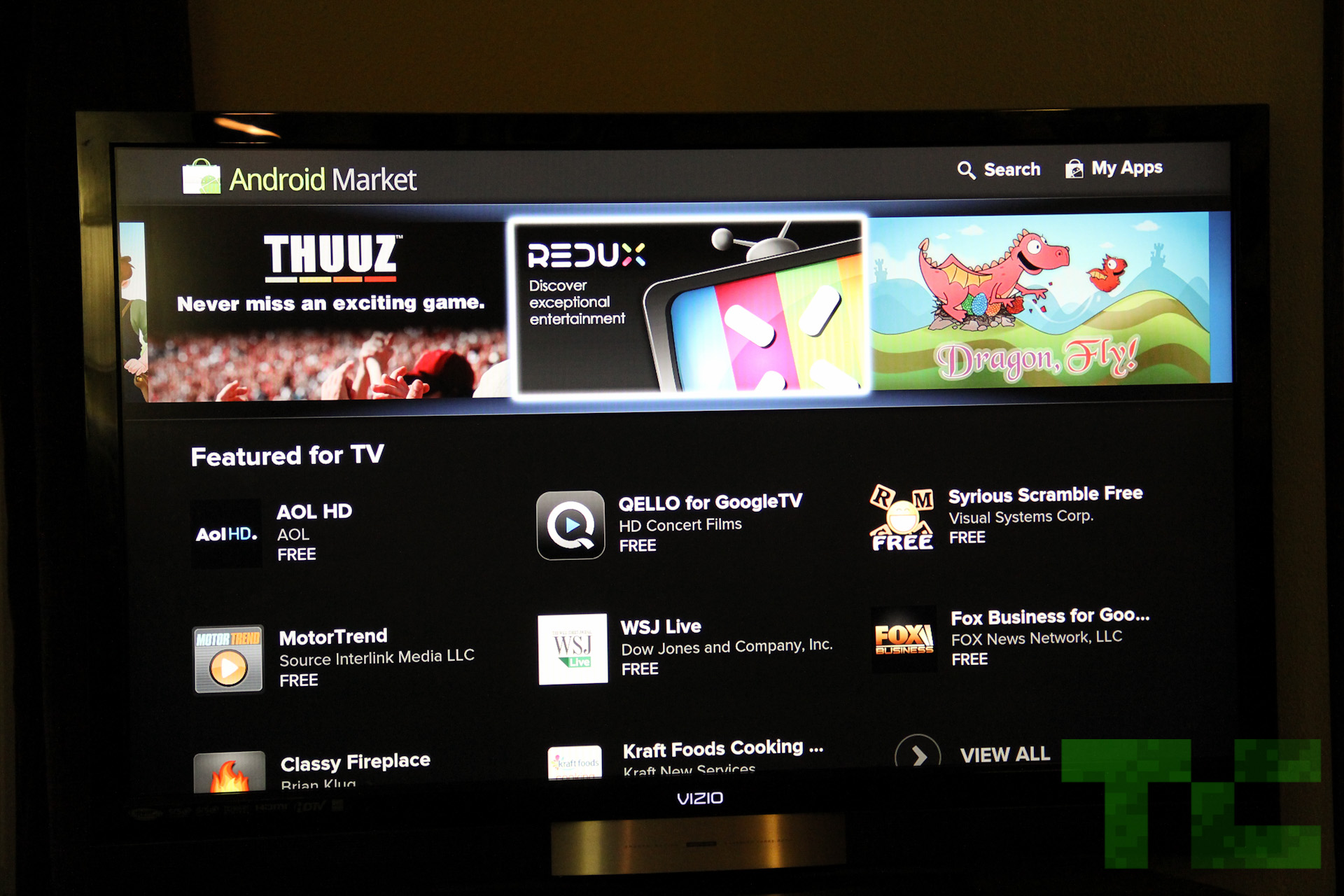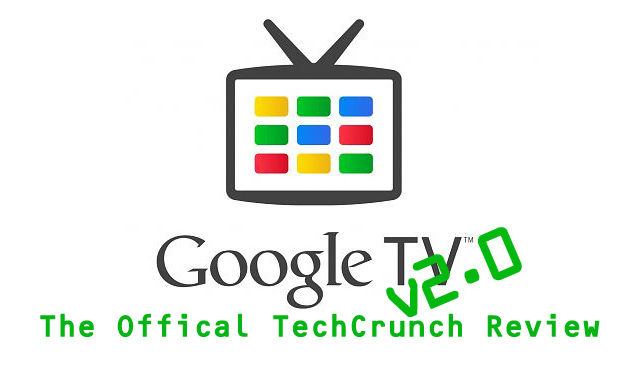It’s with a heavy heart that I write this revised Google TV review. The product is teetering on a ledge between falling into an abyss of obscurity or sliding downhill into geekdom. There doesn’t seem to be an exit path to the mainstream. Google TV, at least in this latest incarnation, fails to impress or resolve the major fundamental issues that doomed the first version. Oh how I wanted Google TV to finally be the bridge between cable and internet content. But it’s still nothing more than a fancy Netflix and YouTube box.
Hear this: The latest Google TV, referred to as Google TV 2.0 throughout the rest of this review, is a star performer. It runs like a champ and it’s clear that Google engineers paid close attention to criticism of version 1.0. Most of the functions and design elements previously missing are elegantly included. However, most of the downfalls of the older version had nothing to do with user interface. Content is king and Google TV sill doesn’t wear the crown.

Google TV 1.0 was a design mishmash. Different screens featured different design cues; each screen was almost completely different. Google TV 2.0 features a mostly unified experience throughout and Android users should feel right at home. The Honeycomb influence is undeniable and it works well on the living room scale of things.
The home screen is now a single bar of icons that overlays the background content. These are the most used apps or swapped for favorites. It also provides a natural navigation path to the apps and the new key features of TV & Movies, YouTube and Chrome. It’s a gorgeous menu tree.
Google TV is now built on Android 3.1 rather than 2.2. The new system runs silky smooth even on the year-old Sony Internet TV Blu-ray player. Google previously stated that it was designed for the older hardware but new models are coming next year that feature new CPUs so the performance should get even better. The older chipsets still choke on the HTML 5 apps. Any of the so-called “Spotlight TV optimized websites” stutter and are generally laggy in operation. It’s so bad that it’s understandable that Google clumped the lot together in one app rather than featuring the content separately. That way, you know, people are less likely to stumble upon them.
Part of Google TV’s draw is the web browsing and it’s vastly improved in Google TV 2.0. Basic features like bookmarks are finally present. Pages load quicker and it’s overall a more natural internet experience.

But that’s where the fun stops.
At its core, Google TV is about serving more entertainment content to the viewer. And it does. It accomplishes this goal, but the additional content is mainly just from Netflix, Amazon and Youtube as Hulu, ABC.com, NBC.com and all the rest of big media’s ad-supported websites are blocked. GTV’s strength has always been its search function that queues several internet sources and the owners cable TV guide. The new TV & Movies app is a major revision of the first generation’s search function. It intelligently presents available content to the viewer. But the limited amount of available services means that it’s mostly an alternative front-end to Netflix and Amazon. It looks and works great, but this smart guide eventually dumps users into the other apps anyway.
During an interview with Google TV’s head, Mario Queiroz, he stated to me that an API is planned for this search so it should grow and improve overtime — at least in theory. That’s the problem with Google TV: In theory it’s great. It sounds like a great service until you use it and find the hassle isn’t compensated by any real value.
Google TV is a great Netflix and YouTube box but that’s about it. The revised YouTube Leanback app features great navigation paths and content discovery, but it seemingly runs on Flash, which as I found, likes to crash. Still, it’s the best way living room YouTube experience I’ve seen yet even with the crashes.

The internet community has long stated that apps will save Google TV. Well, apps are here and I don’t see anything of value. You have a problem when AOL HD is the top featured app. More apps will likely come in time but I for one do not care about playing Angry Birds on Google TV. Besides, the Roku XS already has Angry Birds and a motion control remote. My negative outlook on Google TV would likely change completely if big media outs apps with free access to their ad-supported content.
Worse yet, there don’t seem to be many notable apps exclusive to Google TV. Most video apps are just ports of existing Boxee or Roku apps. Minus Google TV’s arguably trivial cable TV integration, those two devices are superior in many ways to Google TV even with this major revision.
Take the Roku devices. The entire line features access to the same sources, which tower over Google TV with over 100 streaming sources. Most aren’t memorable but Roku has the big three: Netflix, Amazon, and Hulu Plus. All the rest are just a bonus. Google TV has Roku beat with a unified search but Roku has a lot more content. Roku devices also do not have a quality web browser but the additional content — and an interface easy enough for your grandma to use — makes it an easy choice for the person just looking to supplement their cable TV with additional content.
The Boxee Box costs $179, which is $80 more than the Logitech Revue Google TV. But for most, the extra cash is well worth it. Once again, Google TV has Boxee beat in the web browsing department and while Boxee does have a built-in client, the remote only has a four-way directional pad that makes navigating a bit strenuous. But Boxee has a very similar unified search as Google TV. It’s not as pretty as GTV’s but since Boxee still has access to websites like ABC.com, NBC.com and all the rest, the search function presents a lot more available sources, most of which are free. Plus, much like on Google TV, it looks at local network sources, but Boxee doesn’t rely on sloppy DLNA servers like GTV and it can play back nearly any file type, including MKV containers and full Blu-ray disc images from any network source; Google TV 2.0 seems to only like mpeg2 and .avi files and it has to be from a DLNA server.
That said, Google TV 2.0 is fundamentally different from the other devices in that it’s not just another box. Where the Roku and Boxee Box requires owners to switch inputs on their TV and use another remote, Google TV does not. It sits in between a cable or satellite box in a novel way that streams the content through the Google TV, allowing owners to use one remote to control everything and the overlay interface. It’s this scheme that essentially saves Google TV from the deadpool by working with existing equipment, and could perhaps be its savior — at least eventually.
Google TV feels very much like Honeycomb tablets right now. Google is having a party but failed to invite anyone but the socially awkward. It’s just a bunch of dudes standing around, discussing Gabe Newell and Episode 3. Much like with Honeycomb tabs, Google TV 2.0 a solid start and a huge improvement over the first generation, but there’s still isn’t a must-have selling point. People buy Roku devices because they’re dead-simple and have a ton of content. Likewise, the Boxee Box is a hit because of its love of Internet media and vast file format support. Google TV has a good YouTube app and a fancy guide that looks at Netflix. Google TV doesn’t necessarily need more services as other devices, but simply the same amount. Any less and it’s irrelevant.
This isn’t Google TV’s last chance. More hardware is coming in 2012 from Samsung, Vizio and other unannounced partners. Google TV has always shown a ton of promise and this version finally brings the platform the high quality interface it deserves. But it’s still missing content. A pretty face is good for a hit single or two, but staying power requires real substance, which is something Google TV is currently lacking.
